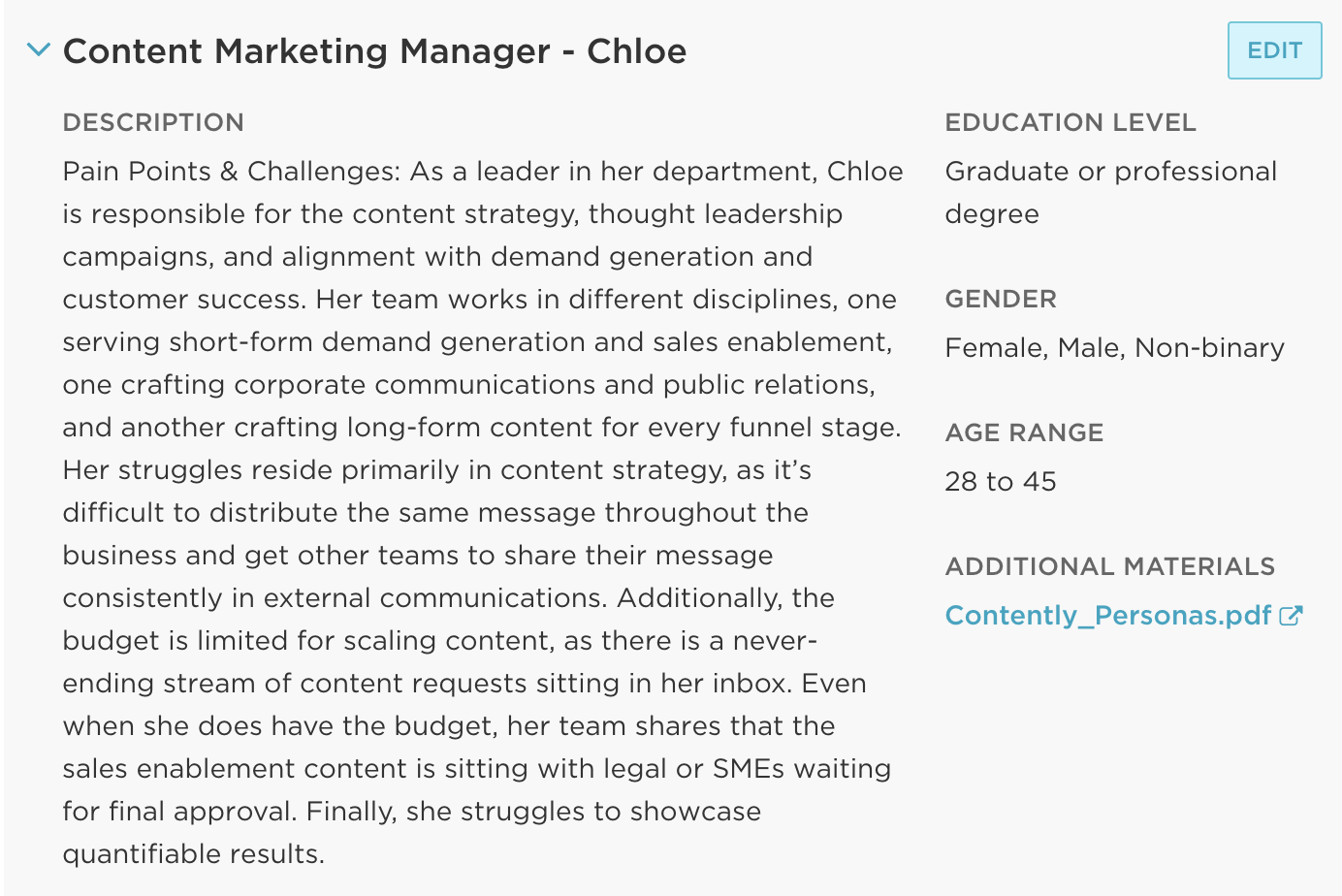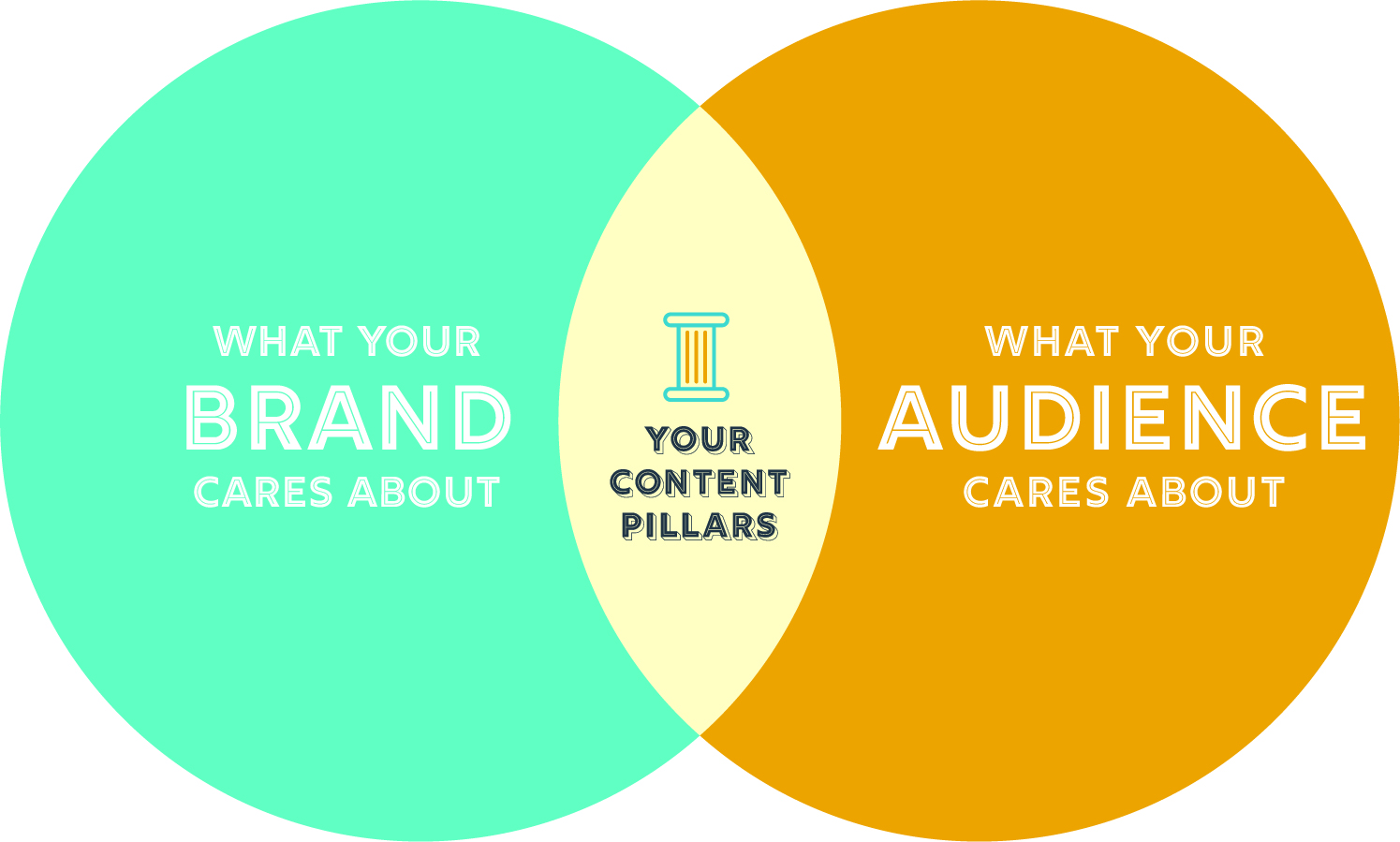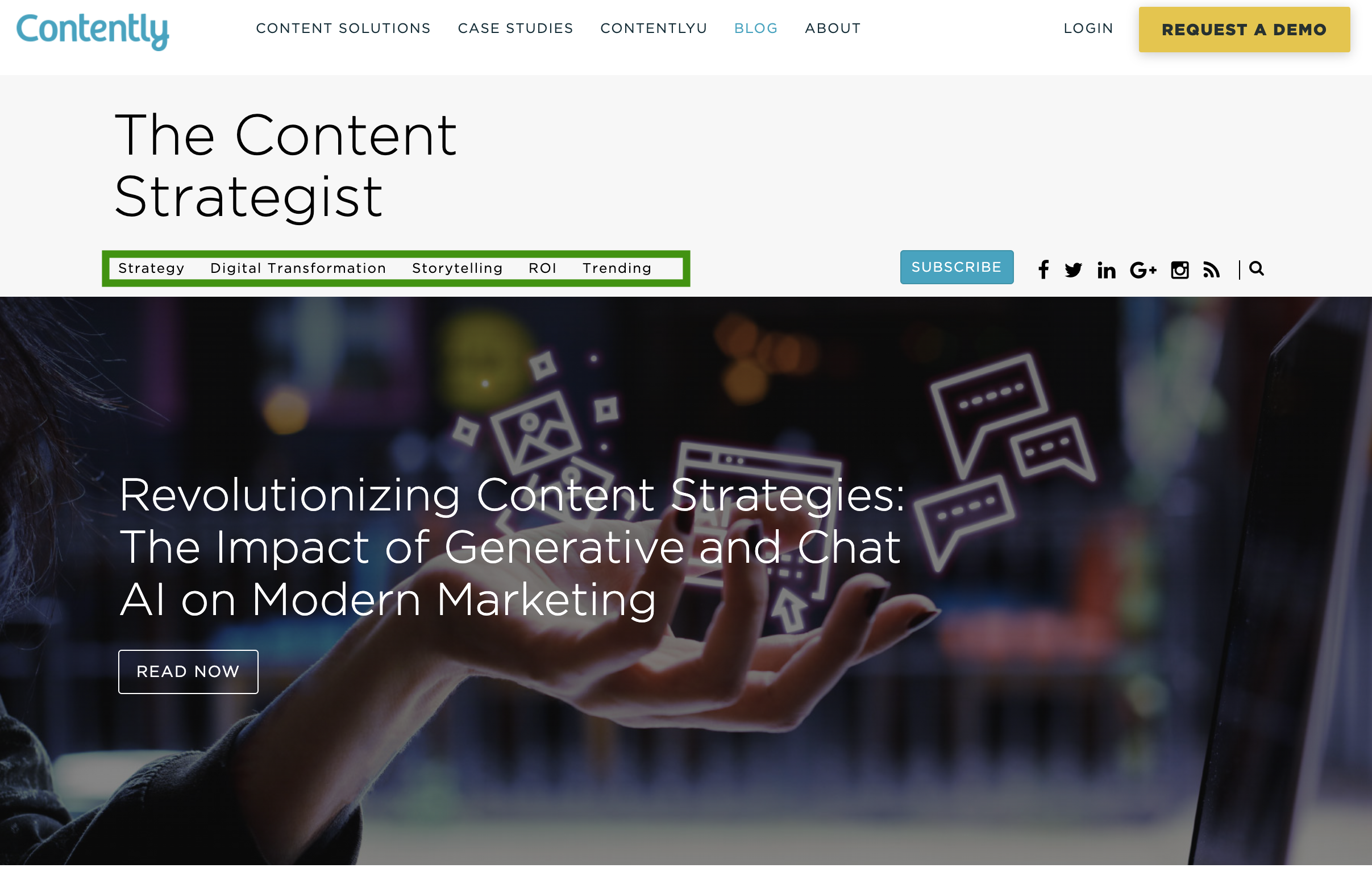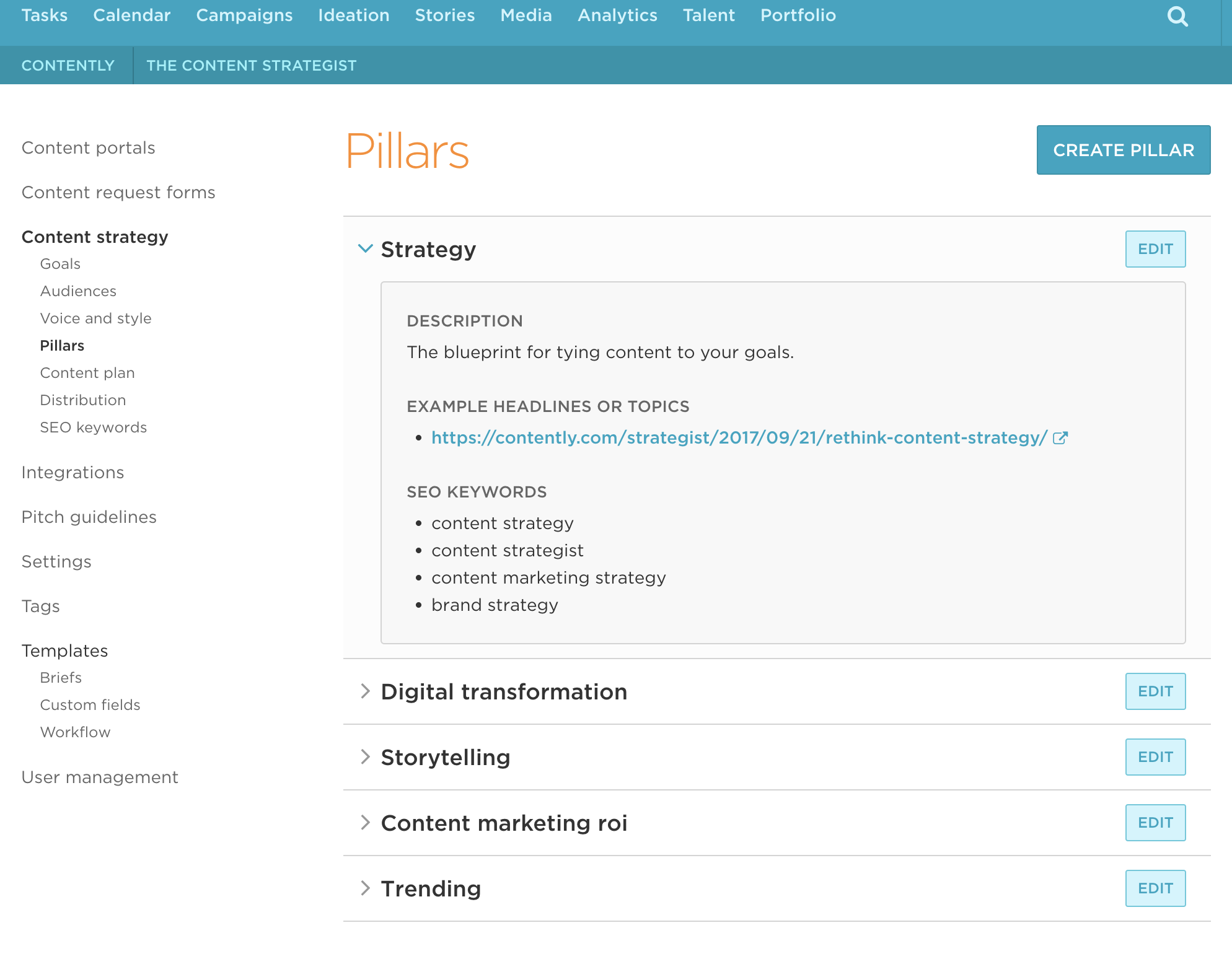Content Marketing
How to Leverage Topic Pillars to Build a Targeted Content Framework
According to WordPress, users create 70 million blog posts per month through its platform. Add to that all the content created across other platforms, and you’ve got a world saturated with content. Helping your brand stand out requires not just creativity but also strategic alignment.
At the heart of this alignment lies a well-structured content framework grounded on solid topic pillars, which act as the foundation for content marketers to build compelling, relevant, and targeted content.
This framework is not a one-size-fits-all template, but a tailored architecture that resonates with a brand’s ethos and speaks directly to its audience’s interests and needs. But establishing this alignment is often easier said than done. Many businesses find themselves in a conundrum, striving to strike a balance between what they deem important and what their audience finds valuable. The disconnect can result in content that drifts aimlessly, failing to hit the mark regarding engagement and conversion. Without a coherent content framework, the consistency in messaging can be lost, and the potential to build a strong, recognizable brand voice may diminish.
Identifying core topics or topic pillars and weaving a content framework around them is crucial in overcoming these challenges. It’s about delving into the core of what matters both to your business and its audience, and crafting content that serves as a bridge between the two.
What Are Topic Pillars?
Topic pillars, often referred to as content pillars or pillar content, are fundamental themes or topics you build your content strategy around. They serve as the cornerstone of your content marketing strategy. Each topic pillar is broad and encompassing, allowing for a range of related sub-topics or cluster content to be developed around it. This strategy is similar but differs from a hub-and-spoke model, which aims to build a stronger direct connection between content pieces. Topic pillars offer a looser and less restrictive strategy.
At Contently, for example, we organize all content within The Content Strategist around our five pillars: Strategy, Digital Transformation, Storytelling, ROI, and Trending.
We’ve baked these pillars into our content strategy by clearly defining them inside the Contently platform. Doing so not only ensures we have our pillars in mind as we plan new content but also allows us to attach the relevant pillar to every project brief, ensuring everyone on the team is in alignment.
Here’s a breakdown of what topic pillars entail:
- Broad Topics: Topic pillars are usually broad themes that are highly relevant to your brand, industry, and audience. They should be expansive enough to allow for the creation of numerous pieces of related content over time.
- SEO Value: They often have SEO value, meaning they are topics that people are searching for. They help in organizing your content in a way that’s not only beneficial for your audience but also for search engines to understand the breadth and depth of content you have on a particular topic.
- Content Clusters: Around each topic pillar, you’ll create cluster content, which are smaller, related pieces of content that delve into the specifics of the broad theme the pillar represents. For instance, if you have a topic pillar on digital marketing, cluster content could cover SEO, social media marketing, email marketing, and other related topics.
- Authority and Relevance: By creating high-quality content around these pillars, you aim to establish your brand’s authority on these topics. This method of structuring content helps build relevance and authority in the eyes of your audience and search engines.
- Interlinked Content: The pillar content and cluster content are interlinked, creating a structured content silo. This not only enhances the user experience by providing additional resources for deeper exploration but also boosts SEO by creating a tightly-knit topical relevance and internal linking structure.
In essence, topic pillars are a strategic approach to content creation, helping you ensure that the content you create is relevant to your audience, has SEO value, and is well-organized both for user experience and search engine optimization. Through this method, content marketers can ensure a more structured, targeted, and effective content marketing strategy.
How to Identify Your Core Topics
Identifying the right topic pillars is crucial as they will guide your content strategy. Here’s a methodical approach content marketers can follow to identify the topic pillars for their brand:
1. Understand Your Audience

- Persona Development: Create detailed buyer personas to understand the interests, problems, and questions of your target audience.
- Audience Feedback: Use surveys, interviews, and feedback from your customer service and sales teams to gather insights into what your audience is interested in.
2. Keyword Research
- Utilize SEO tools to conduct keyword research to find what topics related to your industry are being searched for.
- Look for high-volume, relevant keywords and topics that align with your brand and audience interests.
3. Competitor Analysis
- Analyze the content your competitors are creating to identify the topics that resonate with the shared audience.
- Look for gaps in their content that you can fill or areas where you can provide a unique, better perspective.
4. Industry Trends and Insights
- Stay updated with industry reports, blogs, forums, and news to identify trending topics or perennial themes within your industry.
- Engage in industry forums and communities to understand the ongoing discussions and concerns within your sector.
5. Conduct a Content Audit
- Perform a content audit to analyze your existing content. Identify the topics that have performed well in terms of traffic, engagement, and conversions.
- Look for areas where you already have substantial content and consider building on those topics to create comprehensive pillar pages.
6. Utilize Analytics

- Use analytics tools to gauge which topics have driven the most engagement, traffic, and conversions in the past.
- Analyze the performance of your top-performing content to glean insights into the topic pillars that resonate with your audience.
7. Test and Refine
- Start with a few broad topic pillars and observe the performance of the content created around them.
- Over time, refine your topic pillars based on the data and feedback collected.
8. Utilize Content Platforms
- Platforms like Contently can provide data analytics and trend analysis to help identify core topics and build a content framework around them.
By integrating these steps into a systematic approach, content marketers can identify topic pillars that will not only resonate with their audience but also align with their brand’s goals and the evolving dynamics of their industry.
Building a Content Framework Around Your Topic Pillars
A content framework is a structured plan or blueprint that guides your content creation, distribution, and measurement. Topic pillars are central to this framework are topic pillars, acting as the thematic backbone and ensuring a coherent and focused content strategy that resonates with your audience. Like a roadmap, the content framework, anchored by topic pillars, outlines what content to create, how to organize it, and how it should be distributed and analyzed for optimal results.
Here’s a deeper dive into what a content framework includes:
- Defining Goals and KPIs: Setting clear, measurable objectives is pivotal. Whether your goal is brand awareness, lead generation, or customer engagement, having defined goals can steer the direction of your content framework. Take this example from The Content Strategist in Contently’s publication settings.
- Mapping Content to Customer Journey: Tailoring content to cater to the different stages of the customer journey ensures that the narrative remains relevant and engaging throughout the customer’s journey. In Contently, you can do this with our content tagging functionality.
- Content Calendar Creation: Crafting a content calendar, structured around your topic pillars, ensures a consistent and balanced output, fostering a sustained engagement with the audience.
- Measurement and Optimization: Analyzing your content’s impact against defined KPIs provides invaluable insights for fine-tuning your strategy, ensuring it continues to resonate and achieve the desired objectives.
Combating the Content Deluge with Strategic Pillars
By developing a structured content framework built around robust topic pillars, you’ll not only gain visibility but also meaningful engagements and conversions. By harnessing the clarity and focus that topic pillars bring to the table, and embedding these within a flexible yet well-defined content framework, brands are better positioned to cut through the digital noise, align with audience values, and foster a narrative that resonates.
Unleash the potential of topic pillars with Contently. Book your demo today and start your journey toward more engaging and aligned content.
Get better at your job right now.
Read our monthly newsletter to master content marketing. It’s made for marketers, creators, and everyone in between.










